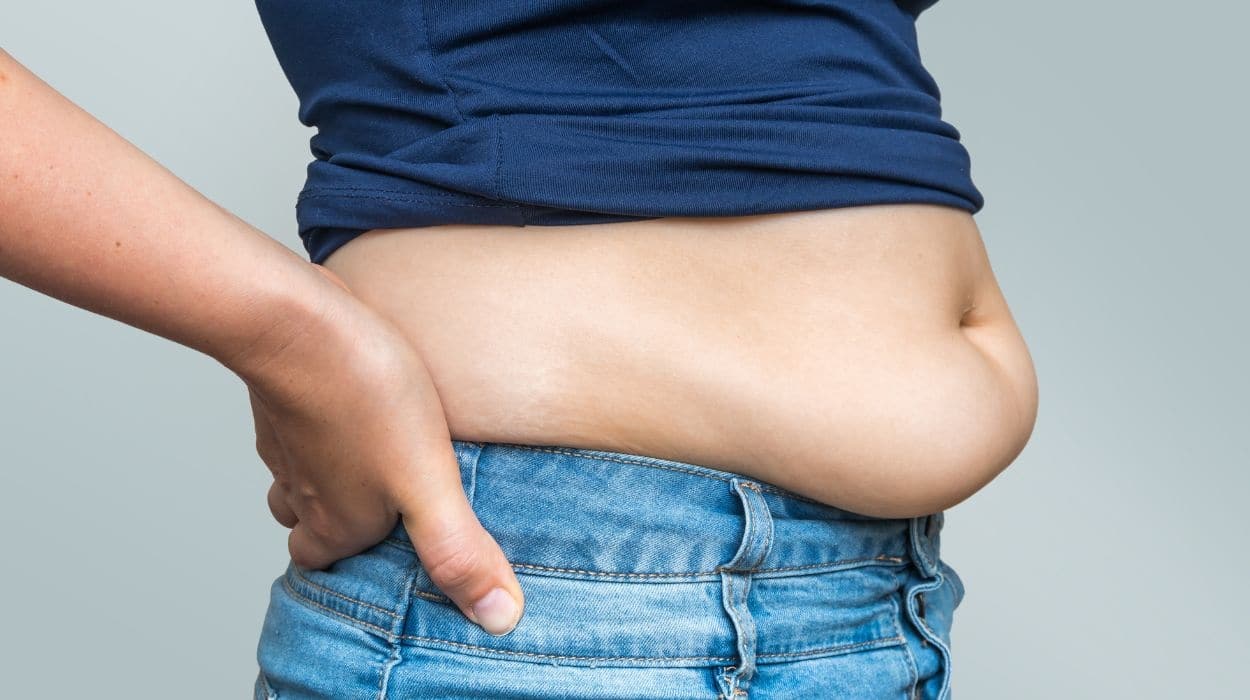It is very well understood how belly fat is formed in the body. A sedentary life, poor eating habits, and increased belly fat are associated with high risks of chronic degenerative diseases. Due to the sedentary lifestyles of most individuals, the issue of how to remove belly fat is extremely popular.
The most important step to reduce belly fat is to take action, change to healthy eating habits, and perform strength training. Fortunately, reading this essay puts you on the correct route. We have compiled 13 scientifically supported techniques to decrease belly fat and lose weight easily in two weeks.
13 Ways To Lose Belly Fat, According To Experts
- Eat lots of soluble fiber
- Reduce your alcohol intake
- Include tart cherries in your diet
- Take a long walk every day
- Increase your protein
- Don’t eat too many sugary foods
- Build up your strength
- Do aerobic exercises
- Reduce your carbs (especially refined carbs)
- Include some crunches in your workout routine
- Replace some of your cooking oil with coconut oil
- Get plenty of sleep
- Eat probiotics or take a probiotic supplement
How To Reduce Visceral Fat Fast and Lose Weight In Two Weeks?
To lose belly fat in two weeks, creating a calorie deficit by reducing calorie intake and increasing physical activity is necessary. Eating a healthy diet with whole, unprocessed foods, regular exercise, getting enough sleep, and managing stress are essential steps.
However, it’s important to understand that two weeks is a short period to see significant changes, and sustainable changes take time. Here are thirteen science-backed ways to lose weight effortlessly.
Eat Lots Of Soluble Fibers
If you hope to lose weight fast in two weeks, you must include soluble fiber in your everyday diet. Fiber absorbs water and forms a gel which slows down food transport in your digestive system. This way, your body feels full, and you naturally eat less, leading to weight loss. Eating more fiber can also decrease the amount of calories your body absorbs when you eat. Some of the best sources of soluble fiber include:
- Flax seeds
- Avocados
- Brussel sprouts
- Legumes
- Blackberries
Reduce Your Alcohol Intake

Alcohol, when consumed in small amounts, has lots of health benefits, but it can become harmful if consumed too much. Several observational studies[1] show the link between heavy alcohol intake and increased risk of abdominal obesity, that is, excess fat deposition around the waist area. By cutting back on your alcohol intake, you can reduce your waist size. You don’t necessarily have to go cold turkey; limiting it to a drink or a glass a day can go a long way.
Include Tart Cherries In Your Diet
Cherries are a good source of resveratrol which is an antioxidant pigment. This pigment is effective for losing weight and also helps reduce the rate of macular degeneration among older people. Eating this a few times a week will speed up your weight loss journey.
Take A Long Walk Every Day
An easy way to keep your body active before establishing an exercise routine is to take long walks daily. You can start with short 10-30-minute walks and then increase the time when your body gets used to it. Start slow and work your way up, so you don’t get burnt out.
Increase Your Protein
The benefits of a high-protein diet cannot be overemphasized. The body is made up of amino acids and proteins, and we need them to maintain optimal body metabolic rates. A rule of thumb is to aim for at least 70 grams of protein throughout the day, especially before you exercise. This will help you burn calories and build muscles.
Don’t Eat Too Many Sugary Foods
Sugar screams calories. Sugar works a bit differently from other food groups, like proteins. It confuses your normal appetite by making you crave more food, causing your body to produce and accumulate fat.
Build Up Your Strength
When you think of losing visceral fat, exercise is the first thing that comes to mind. What you don’t know is that resistance training is even more effective than belly-targeting exercises like crunches. Resistance training exercises like weight lifting or strength training help maintain and improve muscle mass. It also increases your body metabolism, helping you burn excess weight fast.
Do Aerobic Exercises
Aerobic exercise (cardio) is one of the most effective weight loss exercises. It not only burns excess calories but also improves your health. It’s also an effective way to reduce excess belly fat. Note that the frequency and duration of your exercise are more important to the body weight loss than the intensity.
Reduce Your Carbs (Especially Refined Carbs)
Cut your carbs to under 50 grams daily to help you lose abdominal fat. Reducing carbs reduces the risk of obesity and type 2 diabetes. You don’t have to follow a strict carb-free diet; you can simply replace refined carbs with unprocessed starchy carbs.
Include Some Crunches In Your Workout Routine
Although you can’t spot reduced visceral fat, you can build lean muscle mass with cardio exercises and lose overall body fat. Do ab-building exercises three to four times a week on non-consecutive days. You can start with simple routines like crunches and planks.
Replace Some Of Your Cooking Oil With Coconut Oil
Set aside the olive oil and butter, and try coconut oil. Coconut oil is made with medium-chain fatty acids that don’t build up easily and increase metabolism.
Get Plenty Of Sleep
Sleep is necessary to maintain your health and body weight. Lack of sleep has been linked to weight gain, including fat. You should sleep at least 7 hours every night and ensure you are getting quality sleep.
Eat Probiotics Or Take A Probiotic Supplement
Probiotics are found in foods and supplements. They have many health benefits, like boosting immune function and improving gut health.
What Is Belly Fat?

Everyone has belly fat; even people with solid abs have a bit of fat in their bellies. Belly fat, also known as visceral fat, is the fat stored within the abdominal cavity, acting as a cushion or pad to protect the organs in the body. It plays an important function in the body, but too much of it is where the problem is.
Studies[2] show that excess abdominal fat has been linked to a greater risk of developing diabetes and future cardiovascular events. However, abdominal fat may not necessarily be visceral fat. It can also be subcutaneous fat, which is fat stored under the skin. This type of fat is common around the arms and legs. Visceral fat is usually within the abdominal cavity and is the main cause of abdominal fat accumulation.
Healthy Fats
Healthy fats are very important to the body. Fat exists in virtually every cell and organ in the body; this makes it essential for the regular functioning of the human body. Fat plays several roles in the body, including hormone regulation, insulin signaling, nutrient absorption, and regulation of body temperature. More importantly, essential fat-soluble vitamins like Vitamins A, D, E, and K depend on fat for absorption.
Visceral fat is very important in the human body because it surrounds your organs, like your liver and stomach, and lies deep within the walls of your abdomen. A normal amount of abdominal fat is considered healthy, but too much is dangerous to your health. This type of fat is called “active fat” because it is actively involved in normal body function and can increase the risk of serious health problems.
Why Does Belly Fat Usually Form?
Research[3] shows that many different factors contribute to excess fat accumulation and overall weight gain. Here are a few causes:
Excess Calories
Poor dietary habits are the most common cause of lower belly fat. It may be easy to blame a particular food group, like sugar, when you gain weight, but the truth is the overall calories in your food are what makes you gain more weight.
Sitting Too Much
Unfortunately, several people live a sedentary lifestyle requiring them to burn fewer calories. When you sit for a long time or are generally inactive, the body doesn’t burn as much energy as it needs to. This energy is then conserved and stored in the form of fat. Lowering too much belly fat is also very common among office workers because of the nature of their job that requires them to sit for too long.
Body Metabolism
Metabolism refers to how the body converts fuel (food or nutrients) into energy. Everyone is different, so naturally, individual body metabolism differs. Your metabolism can be slow, fast, or moderate, and this largely depends on your genetics. For people with a slow metabolism, losing weight may be more difficult than it may have been.
Those with fast metabolism seem to eat what they want and not add a single pound. Also, as we age, it is very common to become less active, and this causes loss of lean body mass.
Hormones
Hormone imbalance and fluctuations are associated with the accumulation of abdominal fat. The amount or level of hormones in the body, like estrogen, progesterone, and testosterone, changes as we age. This leads to hormonal imbalance, which causes the deposition of excess fat in different areas of the body, especially the abdomen. Certain medical conditions can also influence hormone levels causing abnormal levels of hormones; These conditions can contribute to belly fat accumulation.
What Can You Do To Burn Calories And Lose Body Fat?
Truth is, there’s no “one trick” solution to effective weight loss. Losing too much visceral fat is a process that requires time, commitment, and patience. Reducing belly fat in the abdominal area can be difficult, but there are several effective things you can do to lose weight fast.
Some of the most effective ways you can lose belly fat include:
- Drinking less alcohol
- Reducing sugar intake
- Exercising at least 5 days a week
- Increasing your daily step count to 8,000 steps
- Becoming more physically active
- Getting more sleep
How Long Does It Take To Burn Belly Fat?
Losing belly fat depends on two major factors: your current weight and your definition of a flat tummy. You should know it is impossible to target belly fat alone without losing fat from other areas. Healthcare professionals believe that the main goal is to achieve an overall lower body fat percentage.
One pound of fat is approximately equal to 3,500 calories. This means to lose 1 pound; you need to burn fat about 3,500 calories. So if your goal is to lose 1 pound in a week, you need to cut out 500 calories from your everyday diet. It is more realistic to say you can lose some belly fat in as little as 6-12 weeks of good diet and exercise. People with more belly fat may spend longer getting rid of belly fat than those with less fat to lose.
Conclusion
There are no easy ways to lose lower belly fat fast. Weight loss requires patience, commitment, and lifestyle change. By adopting some or all of the lifestyle changes and strategies discussed in this article, you’ll lose fat around your waist in no time.
Frequently Asked Questions
False. The idea that weight loss occurs in the belly before anywhere else is a common myth. In reality, where you lose weight first and how much you lose from different parts of your body depends on a variety of factors, including your genetics, overall body composition, and the type and intensity of exercise you do. Additionally, spot reduction (i.e. trying to lose weight from a specific area) is generally not effective, and weight loss usually occurs gradually and consistently throughout the body.
Belly fat is also called visceral fat.
A healthy diet that reduces fat typically involves a calorie deficit, meaning that fewer calories are consumed than burned. There are several diets that can help reduce fat, such as low-carb, low-fat, Mediterranean, and plant-based diets. However, it is important to have a balanced and personalized diet that meets individual needs and preferences and to engage in regular physical activity.
Yes. Even skinny people can have an unhealthy amount of fat in their bellies. This is often called hidden belly fat.
Large bellies in men have been linked to various conditions, including type 2 diabetes, high blood pressure, cardiovascular disease, sleep apnea, certain cancers, and metabolic syndrome. This is because excess visceral fat, especially visceral belly fat, can release hormones and other substances that can cause inflammation and contribute to insulin resistance, which can increase the risk of these health problems.
Doing crunches without exercising your entire body is not an effective way to lose weight.
 Expert's opinion
Expert's opinion
